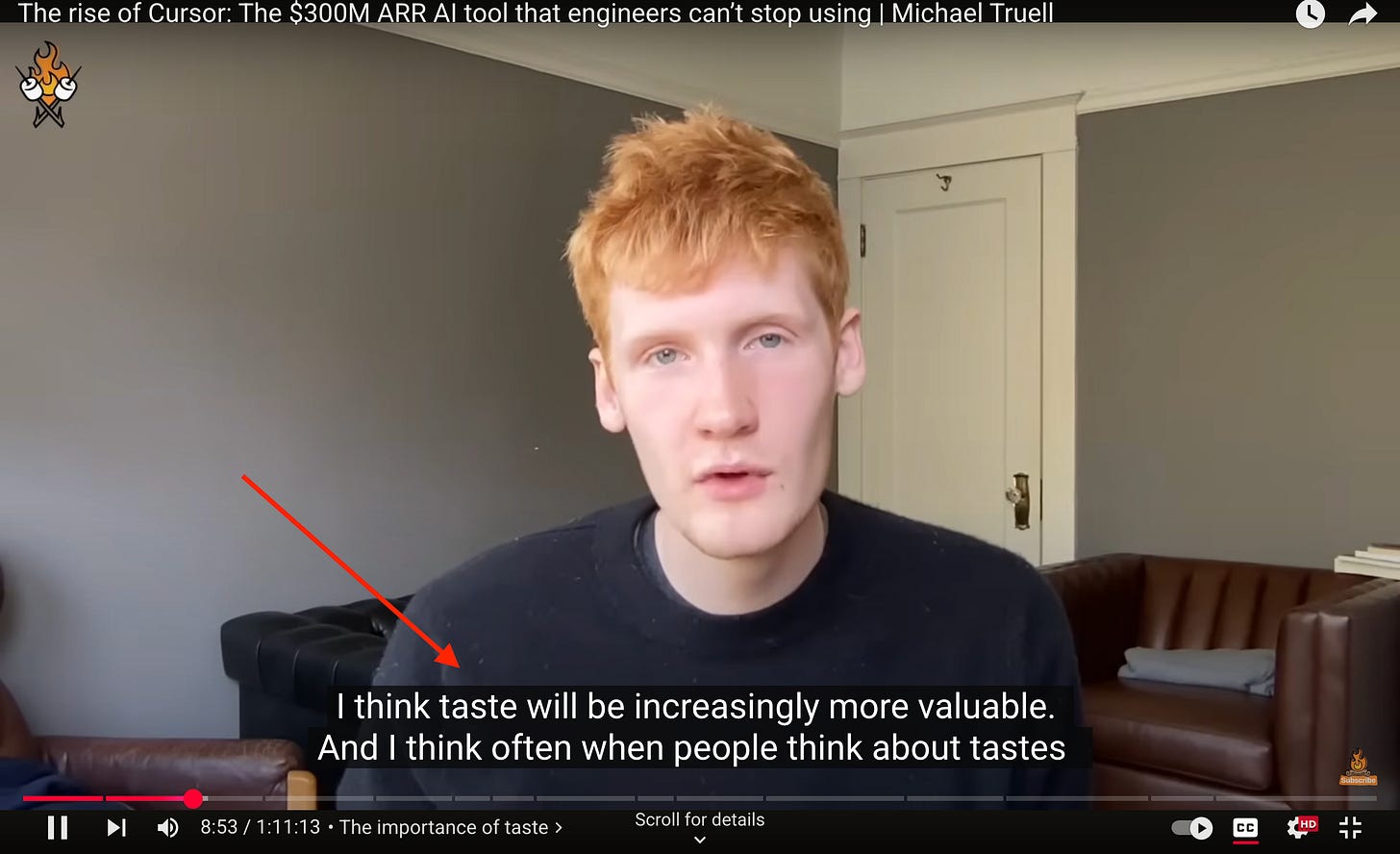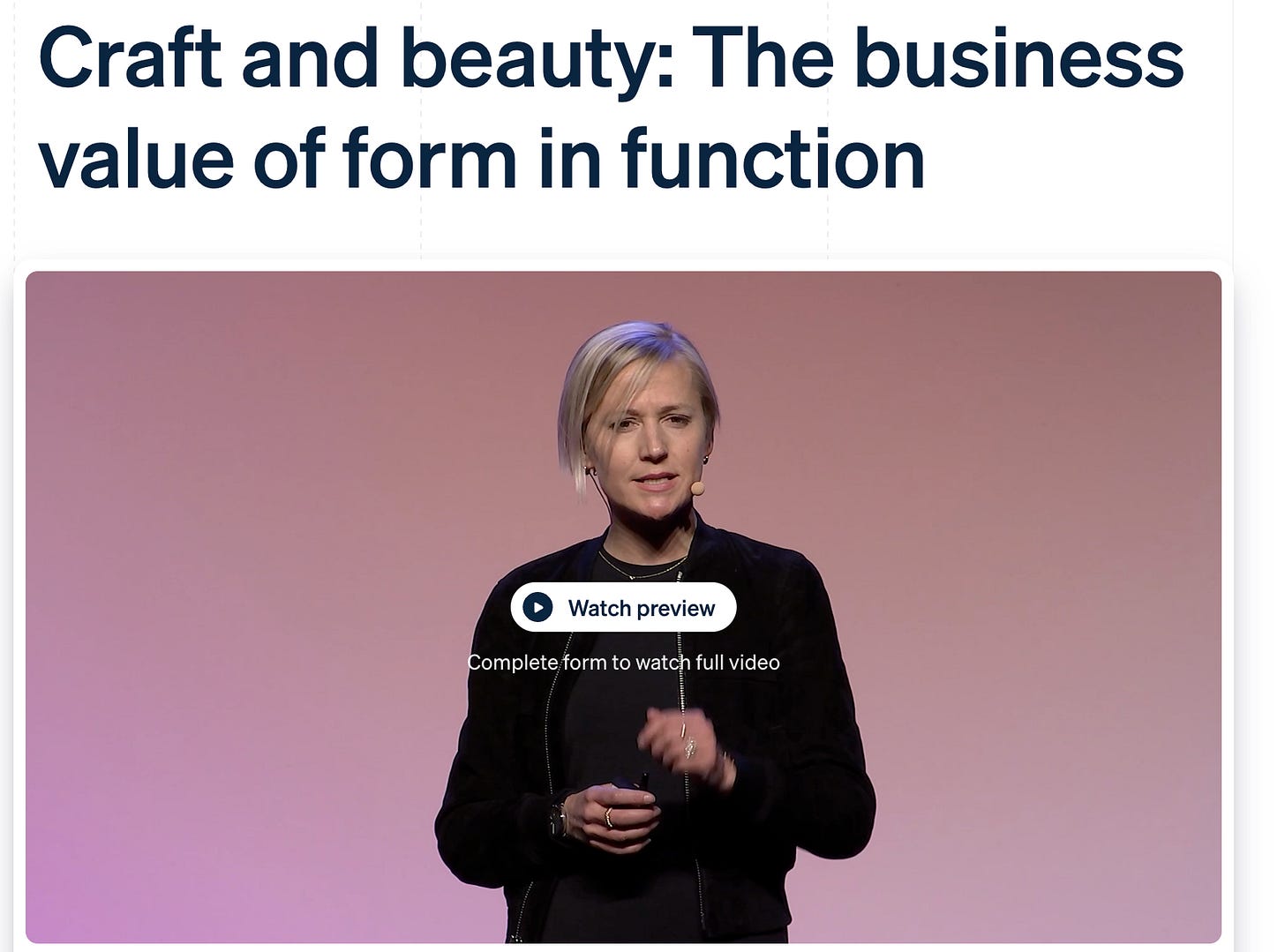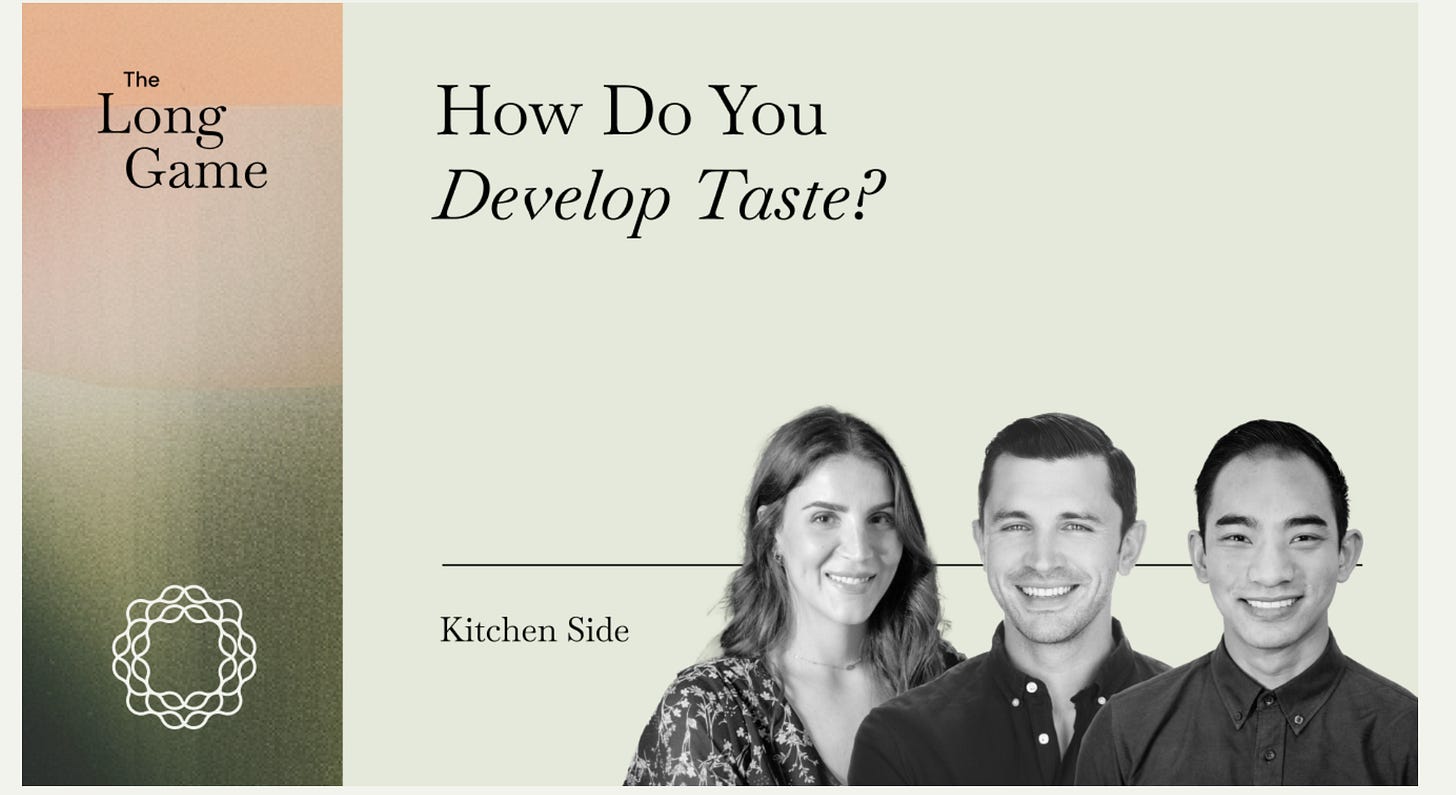Why Taste will matter more than Code in the AI decade
..and some thoughts on how to build judgment in a world that builds itself
In just the 1st quarter of ‘25, the AI and software landscape has seen explosive, measurable growth: 150+ AI-focused startups secured initial funding in Q1 2025 alone, collectively raising more than $5 billion across sectors like enterprise automation, healthcare, and creative industries. AI startups now capture over 33% of global VC funding, with $120 billion invested in 2024 and the momentum accelerating into 2025.
This surge is reflected in the unicorn landscape as well: nearly half (48%) of all new unicorns in 2025 are AI companies, with 11 out of 23 startups reaching $1B+ valuations in Q1 alone coming from the AI sector.
Low-code and no-code platforms are also reshaping the creation landscape - by end of 2025, 70% of all new business applications are projected to use low-code or no-code technologies, and over 500m+ apps and services will be developed using cloud-native approaches. This democratization of development is empowering not just engineers, but business users and entrepreneurs to launch products faster than ever.
All this raises a simple question: if everyone can now build, what makes a product stand out?
Michael Truell (@mntruell), co-founder and CEO of Cursor, said it plainly on Lenny’s podcast that the playing field for creation is now flat. You no longer need to know how to code to launch software. What separates a project that gets ignored from one that gets used—and loved—isn’t execution anymore, but rather judgment, and judgment, in the deepest sense, is taste - the human ability to discern what feels right, what flows, and what deserves to exist.
This is something I’ve been thinking and talking about a lot lately, especially with friends and family who have young kids. Many of them are curious, creative, and eager to build things—but they’re unsure what skills to focus on, or where to even begin. I’ve found myself coming back to the same core idea in those conversations, and I wanted to share it here as well.
I. Taste is built by consumption, but refined by discrimination
If you want to build taste, the first step is getting yourself amidst good work - taste is built on recognition, and you can’t recognize quality if you haven’t seen it. So you read obsessively, you walk through museum exhibits you don’t yet understand, you download apps that aren’t for you just to observe how they behave. Study the UI of Notion, flow of Figma, precision and speed of Superhuman - not to imitate them, per se, but to understand what makes them feel so considered.
But exposure alone isn’t enough. You also have to filter.
Taste begins to form when you stop consuming passively - for example, you look at a landing page and ask: Why does this feel off? or, you watch a film and notice the rhythm of its cuts. You observe that one product feels scammy while another feels confident, even if they offer similar features. You learn to listen to your gut - but you also train it.
The skill is not just to notice beauty or coherence, but rather to name it and then eventually to recreate it. Here are 2 articles i absolutely love on this topic
On Taste (Julie Zhuo, Medium)
Developing Good Taste in Design (Hongkiat) — some thoughts on why stepping away from screens and exposing yourself to physical environments deepens your design instincts
II. Make things —> destroy them —> make them again.
It might sound obvious, but taste doesn’t emerge in theory, and one of the clearest ways I’ve found to explain where it begins is this: it’s forged in the frustrating gap between what you imagine and what you’re actually able to create.
When you try to design a homepage and it ends up looking clumsy, that’s when you start to understand spacing. When your copy sounds flat, you notice how rhythm and tone work in the writing. When every startup name you come up with feels off (guilty!), you start developing an instinct for what evokes clarity and trust.
This gap—between what you hoped something would be and what it turned out to be—isn’t failure, but feedback, and is one of the major drivers behind how your taste gets sharpened.
And the loop is the same for everyone: make something, hate it, revise it, and try again. The people we describe as having “great taste” are often just people who’ve made and thrown away more drafts than you can imagine.
(please go watch this: https://stripe.com/en-sg/sessions/2024/craft-and-beauty-the-business-value-of-form-in-function)
III. Taste lives at the intersection of disciplines
I know there’s tons of literature on how the most creative experiences come from being and thinking alone, but you absolutely don’t develop exceptional taste by staying inside your silo. In fact, some of the richest creative instincts come from outside your own medium; the restraint of Apple borrows from Bauhaus design, the warmth of Pixar comes from the rhythms of jazz, Stripe’s branding has echoes of classic editorial layouts from The New Yorker and Monocle, and Airbnb’s design system draws as much from hospitality as it does from tech.
If you want to design better apps, study how restaurants guide their guests. If you want to write better copy, read poetry and political speeches. The connective tissue between seemingly unrelated fields is where creative judgment becomes unusually sharp.
The most tasteful people I know are almost always generalists with obsessions. They care deeply about food, architecture, typography, furniture, photography, film. They follow their curiosity across disciplines—and then bring it back.
One of the first ideas I was exposed to early in my career—thanks to Dhiraj Rajaram, founder and CEO of Mu Sigma, where I started out—was the power of interdisciplinary thinking. It’s a perspective that has stayed with me ever since. You can watch him share some of that point of view here https://www.mu-sigma.com/founders-quirks/a-lesson-in-interdisciplinary-thinking/
This publishing from Artsy is another lovely, quiet essay on learning to see better across disciplines.
IV. Surround yourself with people who have better taste than you
Taste is contagious- if the people around you are okay with shipping “meh” work, you’ll start to tolerate it too. But if you’re surrounded by people who push, who prune, who say “this isn’t good enough yet” without ego or apology—you’ll grow faster than you thought possible.
Some of my biggest creative leaps in my career came not from books or blogs, but from watching my manager or another colleague quietly improve my work and realizing what I had missed. Learning good taste at work or in social setups isn’t about hierarchy - it’s about environment. No matter how hard you try, you can’t edit your own blind spots. That’s what other people are for.
So ask: “What feels off here?” Most of the times you’d see people struggle telling you what exactly feels off, but listen when someone can’t articulate it, but knows something’s not right - those vague signals are more valuable than they seem. That’s your taste learning to speak.
I like some of the chatter here and here on personal design style and how it’s mostly inspired by anything but personal.
V. Slow down and let things simmer.
We’re trained to ship fast, iterate fast, fail fast, but taste doesn’t work that way. It works more like cooking - rewards time, distance, and re-approach. The best creative decisions don’t always arrive in a sprint—they often come the next morning, or a week later, when you finally see what’s missing.
You notice a button that feels loud. A sentence that tries too hard. A layout that suffocates. And with that space, you fix it—not by adding more, but by removing what doesn’t belong. It’s less about perfectionism and more about patience; about letting a decision settle into its best shape.
Check out this (especially 25-35 minutes into it)
VI. Taste is a lifelong practice. All good things are.
You never arrive at “having taste”, neither do you wake up one day and just “build taste” Needless to say, you’re just always refining it - your bar will keep rising and the work you once admired will start to feel naive (my favorite movie when I was 20 versus today, for example).
Taste doesn’t ossify but sort of breathes, and like any practice—writing, math, chess, cooking—it atrophies if neglected. The people with enduring taste are the ones who stay curious, who keep consuming, keep discarding, keep stretching toward something just out of reach.
Until a point where high quality taste does become the only reason someone gets paid or not, people who have a good rhythm to building taste are not looking for perfection - only for what feels right—and better than last time.
When i share some of these ideas in my circle - one of the most common misunderstandings I hear is that taste is a luxury or that it is a “vibe” or that it is about fonts, filters, or gradients. It is not.
Taste is only knowing what deserves to be built (or not)—and how to build it well.
In a world where AI can write your copy, design your layout, deploy your backend, and even sell for you—judgment is one of the few creative advantages that will take the longest to be automated.





